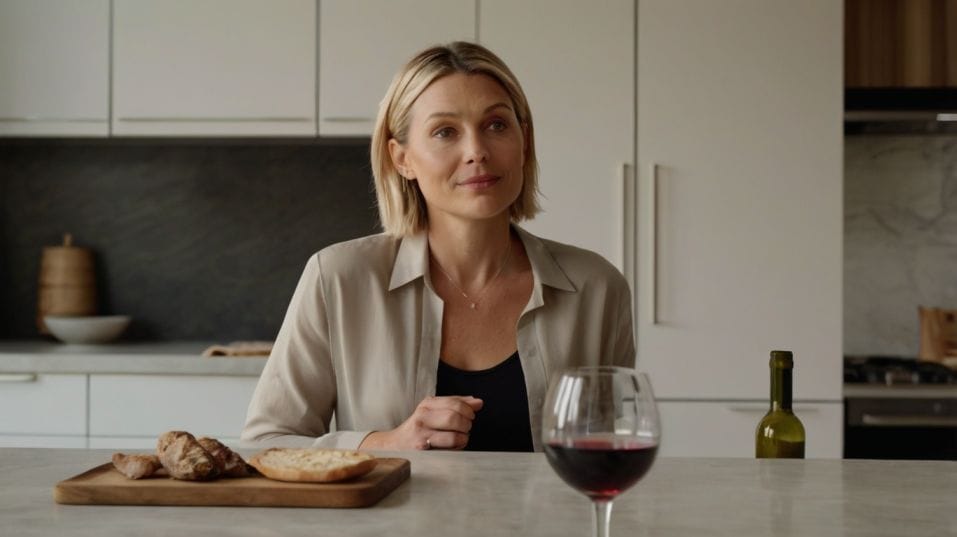How to Taste Wine Without Overthinking It
Learn how to taste wine with clarity and confidence—no pressure, no pretense. Just practical tips to notice more and enjoy what’s in your glass.

Ever wonder if you're “doing it right” when tasting wine? Here’s the good news: you don’t need fancy words or years of experience. All it takes is curiosity and a moment of attention.
Wine tasting isn’t about impressing anyone—it’s about noticing more and enjoying what’s in your glass. This guide will help you tune in, trust your senses, and turn tasting into something personal, relaxed, and rewarding.
Pay Attention Before You Even Taste
Before you swirl or sip, just pause. This isn’t ceremony—it’s setting the stage. Tasting starts with how you look at the wine, how it moves, how it catches the light.
Is it brilliant or hazy? Deeply pigmented or translucent? These things give you clues about what you’re about to experience.
But resist the urge to analyze like a textbook. You’re not grading this wine—you’re observing it. Think of it as warming up your senses. The more you notice with your eyes, the more engaged your palate will be once you sip.
And yes, different grapes, regions, and styles tend to look a certain way—Pinot Noir is usually paler than Syrah; young whites shine brighter than aged ones.
But don’t get stuck in trying to match every wine to a rule. Let what’s in the glass speak first.
Smell with Intention, Not Expectation
Aromatics are where wine becomes expressive. But many people skip this step—or rush through it—because they’re afraid they won’t “get” anything.

Swirl and Sniff, Then Notice the Shift
Here’s what helps: smell once without swirling. That first impression is often your most honest. Then swirl gently and take another sniff. Notice what changes.
The movement releases more volatile aromas, and suddenly a wine that seemed closed might feel brighter or more open.
Don’t Force the Vocabulary
Don’t pressure yourself to name ten fruits or guess obscure spices. Start with questions: Does it smell sharp or mellow? Fresh or baked?
Earthy, herbal, floral, woody, citrusy? These categories open doors to your sensory memory—and over time, your vocabulary will grow naturally from there.
Also, trust your instincts. If a wine smells like sun-dried tomato or watermelon rind or wet pavement, that’s not wrong. That’s your sensory reference. That’s the point.
Taste for Structure, Not Just Flavor
Flavor is the headline, but structure is the architecture. When you sip a wine, notice more than taste—notice feel.
Learn to Identify Acidity, Tannin, and Body
Acidity makes your mouth water. It brings energy and brightness. Tannin makes your tongue feel dry or grippy, especially in red wines.
It’s what gives wine tension and age-worthiness. Body is about weight and texture—how light or full it feels. And alcohol? That often shows up as warmth or a slow burn in the back of your throat.
Great wines aren’t necessarily the ones with the most of any one of these. They’re the ones where the elements are in balance. Where nothing overwhelms. Where the structure carries the flavor, and vice versa.
Flavor Isn’t Fixed—It’s Contextual
Flavor changes. What you taste in the first sip may not match what you taste in the third—or with food, or after it’s had time to open up.
Let the Finish Speak
That’s why rushing through a tasting doesn’t do justice to the wine or your palate. Take a moment after that first sip. Let the finish settle. Ask yourself: what lingers? What fades? What evolves?
A short finish can make a wine feel forgettable, even if the first impression was nice. A long finish, on the other hand, can reveal complexity you didn’t catch right away.
Taste with Your Surroundings in Mind
Also: don’t drink wine in isolation all the time.
Tasting alongside a meal, with different glass shapes, or at different temperatures, can completely shift the way a wine expresses itself. Lean into that variability. It’s not a flaw—it’s part of what makes wine alive.
Build Your Internal Library
You don’t need a journal, but you do need memory. The more wines you taste attentively, the more your brain starts connecting dots.
You remember that unoaked Chardonnay that surprised you with its texture. Or that southern Italian red that tasted like dried herbs and volcanic ash.
Over time, your palate becomes more precise—not because it’s “better,” but because it has more reference points.
The vocabulary you once lacked starts to fill in naturally. Your preferences sharpen. You begin to recognize what you like—and why.
That’s the heart of tasting well: not being able to name more notes, but being able to navigate your own taste with confidence.
Final Thoughts: Turn Tasting Into a Ritual
You don’t need to overthink wine to take it seriously. What you need is a little focus and a lot of curiosity.
Slow down the next time you pour something. Look at it. Smell it twice. Let it sit in your mouth before you pass judgment. You don’t have to describe it to anyone else—just register what it makes you feel and think.
With time, this will become second nature. You’ll pick up wines more intentionally, taste them more clearly, and enjoy them more deeply.
So tonight, try a new bottle—maybe from a place you haven’t explored yet. Pour it into your best glass. Taste it slowly. Let it teach you something. And then do it again next week. Because the more you pay attention, the better it gets.




